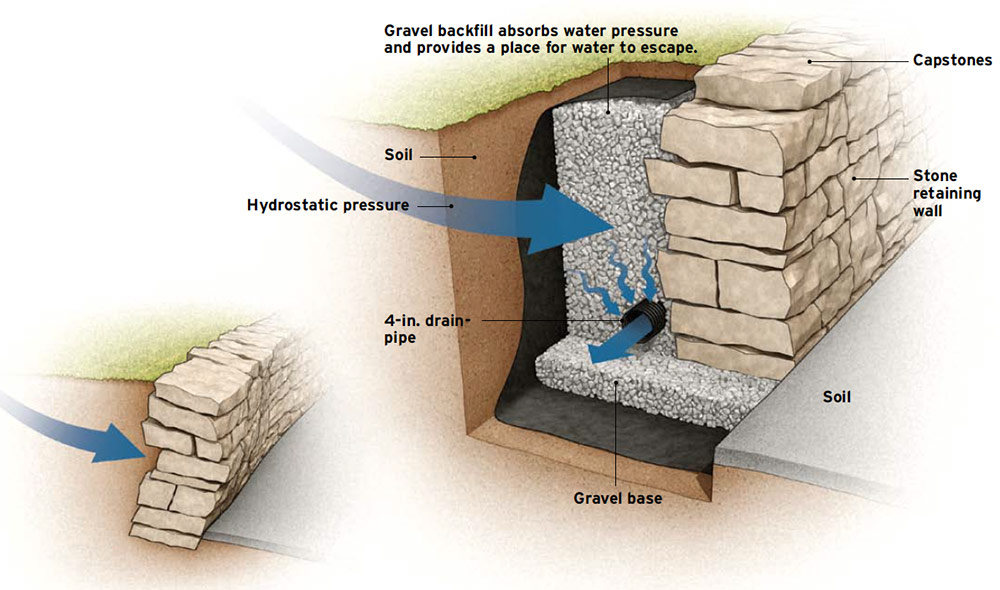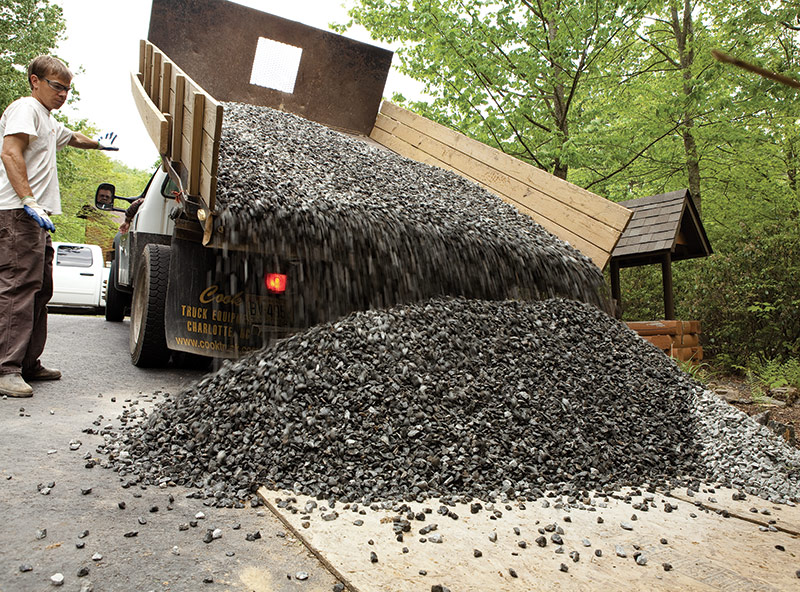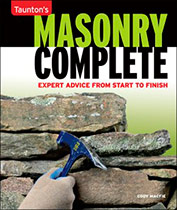General Prep for a Dry-Stack Retaining Wall
Plan the project, buy the right materials, and stage the job site properly to build a sturdy, good-looking wall.

Dry-stacking a stone wall can take as much time as building a mortared wall because each stone takes more time to fit and each void has to be filled. That said, it is easier to build and repair a dry-stack wall because there’s no need to mix mortar and stage those materials and you can spread the work over several weekends. Of course, you don’t want a job to drag on too long. If you don’t buy all the stone at once, it may be hard to match the new stone to the old. And leaving an embankment unprotected is like neglecting an open wound; you may have erosion problems and a dirty mess on the driveway after a hard rain. Cover unfinished work with plastic or mulch to prevent erosion.
Consider the scope of the project and decide whether or not to consult a professional or hire skilled labor. If the wall you’re planning is more than 4 ft. tall, it probably needs to be mortared rather than dry-stacked on a concrete footing. Also, any wall over 4 ft. should be engineered. An engineer will be able to account for frost heave, soil compaction, hydrostatic pressure, and other factors that affect the wall’s structural integrity.
Estimating how long a wall will take to build is a simple calculation. A skilled mason can build about 20 sq. ft. to 30 sq. ft. a day. An efficient DIYer can expect to build 10 sq. ft. to 15 sq. ft. on a good day. So a wall that is 3 ft. tall by 10 ft. long will take an experienced waller and a helper one day to build. It will take a DIYer about three days.
Retaining-Wall DrainageHydrostatic pressure is the force that’s exerted behind a retaining wall due to the accumulation of water. Over time, it can push the wall forward and weaken it (as shown in the drawing at left below). Providing a place for the water to escape can prevent this problem. |
For the project described in this chapter, the homeowners wanted to fix a wall that ran along the inside of their circular driveway as it dropped down from the street. The old wall was a good example of problems that arise without proper drainage and soil retention. With every rain, soil washed through the wall and onto their asphalt drive. Hydrostatic pressure dislodged stones and caused the wall to bulge in places, giving it an unorganized and unstable appearance.
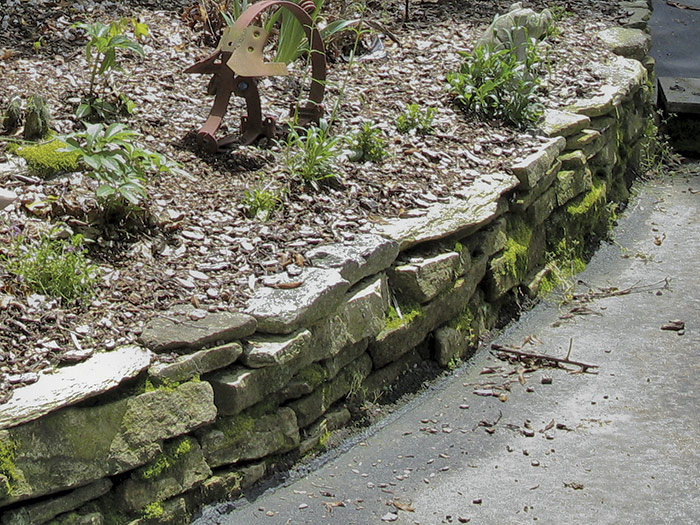
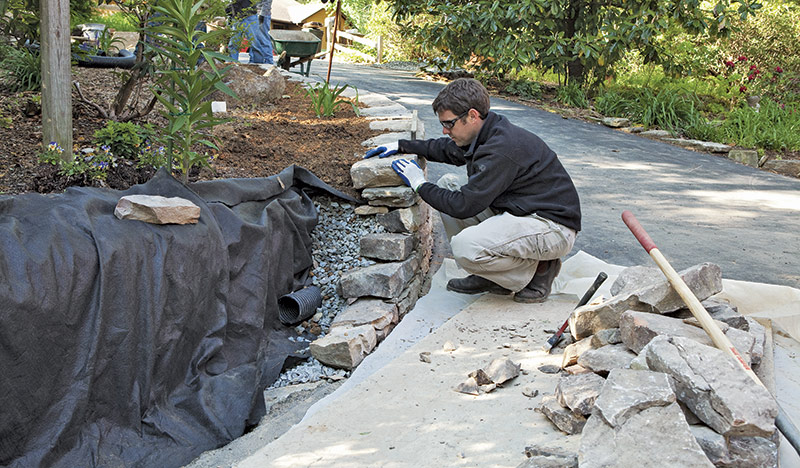
The best solution was to tear out the old wall and rebuild with proper soil filtration and drainage. Because the new wall would be slightly bigger, we decided to replace all the stone rather than try to patch and match. The old stone ended up being used for the footing and for smaller walls on the same property.
Before You Begin
Replacing a large wall requires considerable staging. Before you begin, decide where you will put excavated soil, gravel, stone from the old wall, and stone for the new wall. Also, fragments from shaping stone can fly a long distance at a surprising speed. If you are working around vehicles or windows, be sure to cover them.
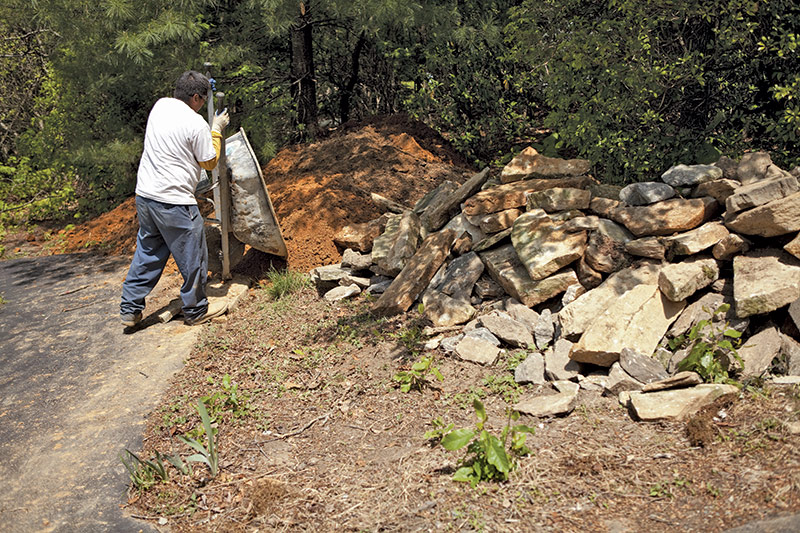
When a wall follows an asphalt driveway, the layout is a given. Sometimes trying to figure out how to lay out a wall isn’t so simple; you may have to use stringlines (mason twine), batter boards, or garden hoses to lay out your project.
When shopping at the stoneyard, choose stones that are uniform in size and close to rectangular. They are generally more expensive but require less chiseling. They also stack faster and make a stronger wall.
Calculating MaterialsTo determine how much stone you will need, divide the square-foot area of your wall by 25. For dry-stack applications, it generally takes about one ton of stone to make 25 sq. ft. of stonework. For example, if your wall is 50 ft. long and 3 ft. high, multiply 50 by 3 to get the area (150 sq. ft.). Then divide 150 by 25 to find how many tons of stone you’ll need (6). It’s smart to buy extra(10 to 15 percent, or 61⁄2 to 7 tons in this example), in case there are some inferior stones you don’t want to use. |
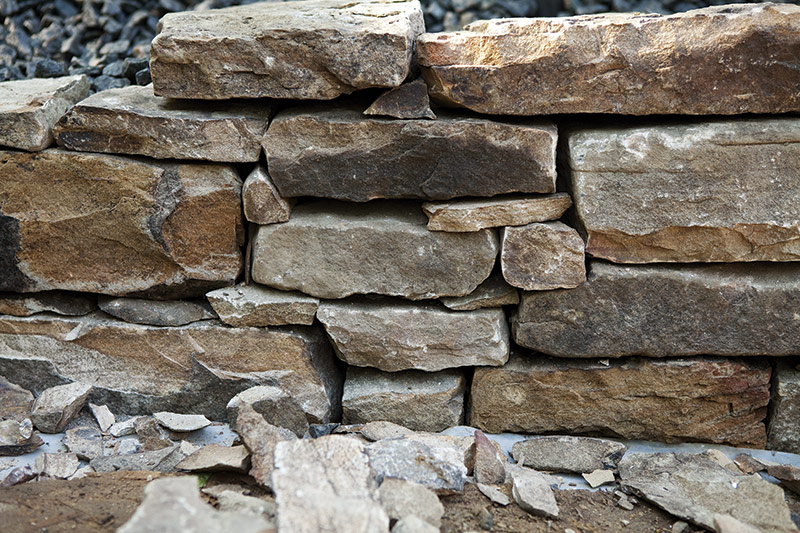 |
Excerpted from Masonry Complete (The Taunton Press, 2012) by Cody Macfie
Available at Amazon.com.

